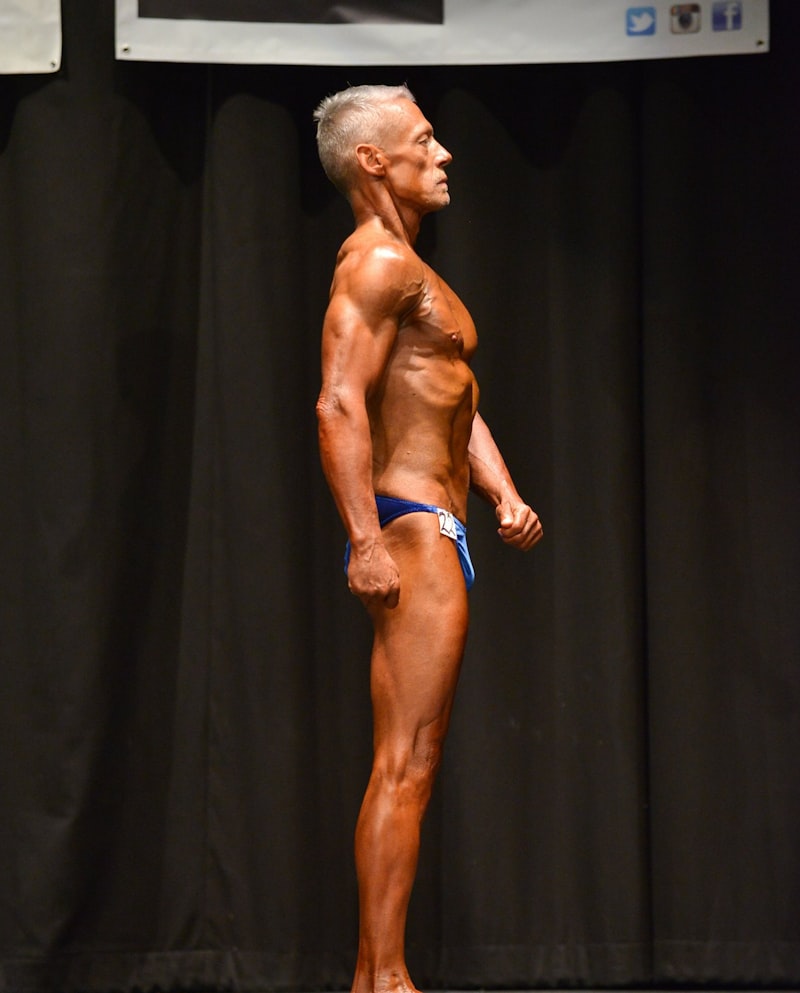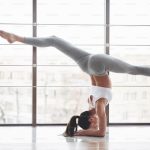Firstly, yoga brings together deep breathing and gentle stretching, which can work wonders for releasing tight muscles. Imagine your muscles as tight rubber bands; yoga helps to gently stretch and unwind them, allowing for increased blood flow and oxygenation. This not only eases the physical tension but also calms the mind, creating a holistic relaxation experience.
One of the key aspects of yoga for reducing muscle tension is its focus on mindful movement. As you flow through poses like Child’s Pose, Downward Dog, and Cat-Cow, you become more aware of your body’s sensations and limitations. This mindfulness allows you to pinpoint areas of tension and consciously release them through controlled movements and stretches.
Moreover, yoga encourages you to hold poses that target specific muscle groups. These sustained stretches help in lengthening the muscles and improving flexibility over time. For instance, the Warrior poses are excellent for stretching the legs and lower back, while the Cobra pose can alleviate tension in the spine and chest.
Beyond physical poses, yoga incorporates relaxation techniques such as meditation and deep breathing exercises. These practices activate the parasympathetic nervous system, which triggers the body’s natural relaxation response. As a result, your muscles relax more deeply, and you experience reduced overall tension.
Unlocking Serenity: Yoga Poses That Target Muscle Tension
Imagine this: you’re standing tall, taking a deep breath in, and slowly sinking into a gentle Forward Fold. As you bend forward, letting gravity do its work, you can feel the tension melting away from your neck and shoulders. This pose not only stretches your hamstrings and calves but also provides a soothing release for those tight upper body muscles.
Or how about the calming Cat-Cow pose? As you flow through these gentle movements, arching your back like a contented cat and then dipping into a gentle cow-like stretch, you’re not just easing tension in your spine—you’re also creating space for relaxation to flood into every muscle.
For those days when your lower back feels like it’s tied up in knots, there’s the child’s pose. Kneeling on the ground, you gently fold forward, resting your forehead on the mat and extending your arms out in front of you. This comforting pose stretches your back, hips, and thighs, offering a sense of relief and tranquility that can’t be matched.
And let’s not forget the powerful Warrior II pose. Standing strong with your legs apart and arms extended, you’re not just striking a pose—you’re engaging your core, opening up your hips, and strengthening your legs. This warrior stance not only builds physical resilience but also helps to release tension in your shoulders and upper back.
So, whether you’re battling a case of the Mondays or winding down after a long day, these yoga poses are your secret weapon against muscle tension. Embrace the flow, breathe deeply, and let the serenity of yoga unlock the peace within your body.
Mastering Relaxation: Effective Yoga Techniques for Muscle Relief
Yoga isn’t just about striking impressive poses; it’s a holistic practice that combines breath, movement, and mindfulness. One of the most effective techniques for muscle relief is Child’s Pose. This gentle stretch allows you to surrender your weight, letting your back and shoulders release tension gradually. Imagine curling up like a contented child, finding solace in the simplicity of the pose.
Another fantastic option is Cat-Cow Pose, which involves alternating between arching and rounding your spine. This rhythmic movement not only enhances flexibility but also massages the spine and back muscles. It’s like a gentle wave of relaxation flowing through your body, loosening up knots and encouraging circulation.
For those tight shoulders and upper back, Thread the Needle Pose works wonders. By threading one arm under the other while kneeling, you stretch the shoulders and release tension in the upper back. It’s akin to unraveling a tightly wound thread, allowing your muscles to breathe and soften.
If you’re looking to unwind your entire body, Corpse Pose (Savasana) is a must-try. This final relaxation pose involves lying down comfortably, closing your eyes, and simply letting go. It’s like sinking into a soft bed after a long day – your muscles relax completely, and your mind drifts into a state of peacefulness.
These yoga techniques aren’t just about physical relief; they also promote mental relaxation. By focusing on your breath and the sensations in your body, you cultivate mindfulness, which helps to alleviate stress and anxiety.
So, next time you feel the tension creeping into your muscles, consider practicing these effective yoga techniques. Whether it’s Child’s Pose, Cat-Cow, Thread the Needle, or Savasana, each pose offers a unique way to unwind and find inner calm. Start mastering relaxation today and discover the transformative power of yoga for muscle relief.
Beyond Stretching: Yoga’s Secret to Easing Muscle Tension
Yoga isn’t just about touching your toes or doing impressive poses. It’s a holistic practice that understands the intricacies of muscle tension and offers profound solutions beyond what traditional stretching alone can achieve. Imagine your muscles as knots in a rope—stretching might loosen them up a bit, but yoga untangles each knot delicately, leaving you feeling not just flexible but deeply relaxed and rejuvenated.
One of yoga’s secrets lies in its focus on breath and mindfulness. As you move through various poses, the emphasis on controlled breathing helps release tension that’s often held unconsciously in muscles. This mindful approach not only enhances the physical stretch but also calms the mind, creating a synergy that promotes overall relaxation.
Moreover, yoga encourages a deeper connection between the mind and body. Unlike isolated stretching exercises, yoga postures integrate stretching with strength and balance, engaging muscles in a comprehensive way. This integration allows muscles to lengthen and relax more effectively, reducing tightness that accumulates from prolonged sitting or repetitive movements.
Furthermore, yoga’s emphasis on gentle stretching combined with relaxation techniques like meditation or guided imagery enhances the body’s natural ability to heal. It stimulates circulation, delivering oxygen and nutrients to muscles, which aids in recovery and reduces soreness after workouts or long periods of inactivity.

Another aspect that sets yoga apart is its adaptability. Whether you’re a beginner or an experienced practitioner, there are yoga poses and sequences suited to your level and needs. From restorative yoga that uses props to support relaxation to dynamic flows that build strength and flexibility, there’s a practice for everyone seeking relief from muscle tension.
Yoga Unwound: Techniques to Release Tight Muscles
One of the most popular methods in yoga for releasing tight muscles is through gentle stretching combined with deep breathing. This combination not only increases flexibility but also enhances blood circulation to the muscles, promoting relaxation. Imagine your muscles soaking up fresh oxygen with each deep breath, melting away tension like ice under the warm sun.
Another effective technique is using restorative yoga poses. These poses are like a soothing balm for your body, allowing you to fully relax into each stretch. Poses such as Child’s Pose, where you kneel and stretch forward with your arms extended, gently stretch the lower back and hips while calming the mind. It’s like giving your muscles a much-needed vacation.

For those tight shoulders and neck, try incorporating gentle shoulder rolls and neck stretches into your routine. These simple movements can help alleviate tension that builds up from long hours at the desk or staring at screens. Picture your shoulders dropping away from your ears with each roll, releasing tension like water flowing down a stream.
Yoga also teaches us the art of mindfulness, which plays a crucial role in muscle relaxation. By being present in the moment and focusing on your breath and body sensations, you can direct your attention to areas holding tension and consciously let go. It’s like untangling knots in a delicate necklace, one gentle pull at a time.
Incorporating these yoga techniques into your routine can transform how you feel in your body. Whether it’s after a long day at work or a strenuous workout, taking a few moments to unwind with yoga can leave you feeling refreshed and rejuvenated. So, next time you feel like your muscles are wound up, roll out your yoga mat and give these techniques a try. Your body will thank you for it!
From Stress to Zen: Yoga Strategies for Muscular Relaxation
Yoga is more than just stretching and posing—it’s a holistic practice that combines physical postures, breathing techniques, and mindfulness to promote relaxation and reduce tension. When it comes to muscular relaxation, certain yoga poses specifically target areas where stress tends to accumulate, such as the neck, shoulders, and lower back.
Imagine this: after a long day of deadlines and meetings, you roll out your yoga mat and settle into Child’s Pose. As you gently lower your forehead to the ground and extend your arms forward, you can feel the tension melting away from your back and shoulders. This pose elongates the spine and releases tension in the muscles of the back, offering instant relief.
Another effective pose is the Supine Twist. Lying on your back, you bring one knee towards your chest and then guide it across your body while keeping the opposite shoulder grounded. This gentle twist not only stretches the back muscles but also helps to improve spinal mobility and release tension in the lower back and hips.
Breathing techniques, or pranayama, also play a crucial role in achieving muscular relaxation through yoga. Deep breathing exercises, such as diaphragmatic breathing or alternate nostril breathing, can activate the body’s relaxation response and help to calm the mind and muscles alike.
The beauty of yoga lies in its adaptability. Whether you’re a beginner or a seasoned yogi, there are poses and techniques that can be tailored to your level of flexibility and comfort. By incorporating yoga into your daily routine, you not only prioritize your physical well-being but also cultivate a sense of inner peace and tranquility that extends beyond the mat.
Ready to trade tension for tranquility? Roll out your mat, take a deep breath, and let yoga guide you from stress to Zen-like muscular relaxation. Your body and mind will thank you for it.
Frequently Asked Questions
Are There Breathing Techniques in Yoga That Help Release Muscle Tension
Discover effective yoga breathing techniques designed to release muscle tension. Learn how specific pranayama practices can promote relaxation and reduce stress, enhancing overall well-being.
How Often Should I Practice Yoga to Reduce Muscle Tension
Learn how often to practice yoga to effectively reduce muscle tension. Discover optimal frequencies and durations for yoga sessions to achieve maximum relaxation and relief.
Should Beginners Start with Specific Yoga Practices for Muscle Tension
Learn why beginners should consider specific yoga practices for muscle tension relief, including gentle stretches and relaxation techniques to improve flexibility and reduce stress.
Can Yoga Help with Chronic Muscle Pain and Tension
Discover how yoga can effectively alleviate chronic muscle pain and tension through targeted stretches, breathing techniques, and mindfulness practices. Learn about the benefits of regular yoga practice in reducing muscle stiffness, promoting relaxation, and enhancing overall flexibility.
What are the Best Yoga Poses for Relieving Muscle Tension
Discover effective yoga poses to relieve muscle tension with our concise guide. Learn how each pose targets specific muscle groups to promote relaxation and flexibility.


